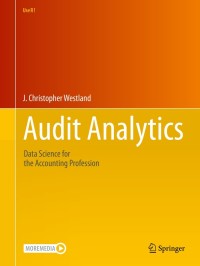Answered step by step
Verified Expert Solution
Question
1 Approved Answer
PLEASE COMPLETE REQUIRE C , please give correct answer, thanks!!! e Egg is considering the purchase of a new distributed network computer system to help


PLEASE COMPLETE REQUIRE C , please give correct answer, thanks!!!
e Egg is considering the purchase of a new distributed network computer system to help handle its warehouse inventories. The system costs $50,000 to purchase and install and $32,000 to operate each year. The system is estimated to be useful for 4 years. Management expects the new system to reduce the cost of managing inventories by $58,000 per year. The firm's cost of capital (discount rate) is 11%. Required: 1. What is the net present value (NPV) of the proposed investment under each of the following independent situations? (Use the appropriate present value factors from Appendix C, TABLE 1 and Appendix C, TABLE 2.) 1a. The firm is not yet profitable and therefore pays no income taxes. 1b. The firm is in the 26% income tax bracket and uses straight-line (SLN) depreciation with no salvage value. Assume MACRS rules do not apply. 1c. The firm is in the 26% income tax bracket and uses double-declining-balance (DDB) depreciation with no salvage value. Given a four-year life, the DDB depreciation rate is 50% i.e., 2 x 25%). In year four, record depreciation expense as the net book value (NBV) of the asset at the start of the year. 2. What is the internal rate of return (IRR) of the proposed investment for situations in requirement 1, parts (a) through (c)? Use the IRR builit-in function in Excel to compute the IRR. Answer is complete but not entirely correct. Complete this question by entering your answers in the tabs below. Req 1A Req 1B Req 1C Req 2 The firm is in the 26% income tax bracket and uses double-declining-balance (DDB) depreciation with no salvage value. Given a four-year life, the DDB depreciation rate is 50% (i.e., 2 x 25%). In year four, record depreciation expense as the net book value (NBV) of the asset at the start of the year. (Negative amounts should be indicated by a minus sign. Round discount factor to 3 decimal places and other answers to the nearest whole dollar amount.) Show less Year DDB Depreciation Expense Taxable Income Income Taxes Present Values 0 $ Pre-Tax Cash Inflows $ (50,000) 26,000 26,000 26,000 26,000 (25,000) > (12,500) (6,250) (6,250) 1,000 13,500 19,750 19,750 (260) X (3,510) (5,135) (5,135) X After-tax Discount Net Cash Factor Inflow $ (50,000) 1.000 25,740 0.901 22,490 0.812 20,865 0.731 20,865 0.659 Net present value (NPV) (50,000) 23,189 18,253 15,256 13,744 20,442 4 $ e Egg is considering the purchase of a new distributed network computer system to help handle its warehouse inventories. The system costs $50,000 to purchase and install and $32,000 to operate each year. The system is estimated to be useful for 4 years. Management expects the new system to reduce the cost of managing inventories by $58,000 per year. The firm's cost of capital (discount rate) is 11%. Required: 1. What is the net present value (NPV) of the proposed investment under each of the following independent situations? (Use the appropriate present value factors from Appendix C, TABLE 1 and Appendix C, TABLE 2.) 1a. The firm is not yet profitable and therefore pays no income taxes. 1b. The firm is in the 26% income tax bracket and uses straight-line (SLN) depreciation with no salvage value. Assume MACRS rules do not apply. 1c. The firm is in the 26% income tax bracket and uses double-declining-balance (DDB) depreciation with no salvage value. Given a four-year life, the DDB depreciation rate is 50% i.e., 2 x 25%). In year four, record depreciation expense as the net book value (NBV) of the asset at the start of the year. 2. What is the internal rate of return (IRR) of the proposed investment for situations in requirement 1, parts (a) through (c)? Use the IRR builit-in function in Excel to compute the IRR. Answer is complete but not entirely correct. Complete this question by entering your answers in the tabs below. Req 1A Req 1B Req 1C Req 2 The firm is in the 26% income tax bracket and uses double-declining-balance (DDB) depreciation with no salvage value. Given a four-year life, the DDB depreciation rate is 50% (i.e., 2 x 25%). In year four, record depreciation expense as the net book value (NBV) of the asset at the start of the year. (Negative amounts should be indicated by a minus sign. Round discount factor to 3 decimal places and other answers to the nearest whole dollar amount.) Show less Year DDB Depreciation Expense Taxable Income Income Taxes Present Values 0 $ Pre-Tax Cash Inflows $ (50,000) 26,000 26,000 26,000 26,000 (25,000) > (12,500) (6,250) (6,250) 1,000 13,500 19,750 19,750 (260) X (3,510) (5,135) (5,135) X After-tax Discount Net Cash Factor Inflow $ (50,000) 1.000 25,740 0.901 22,490 0.812 20,865 0.731 20,865 0.659 Net present value (NPV) (50,000) 23,189 18,253 15,256 13,744 20,442 4 $Step by Step Solution
There are 3 Steps involved in it
Step: 1

Get Instant Access to Expert-Tailored Solutions
See step-by-step solutions with expert insights and AI powered tools for academic success
Step: 2

Step: 3

Ace Your Homework with AI
Get the answers you need in no time with our AI-driven, step-by-step assistance
Get Started


